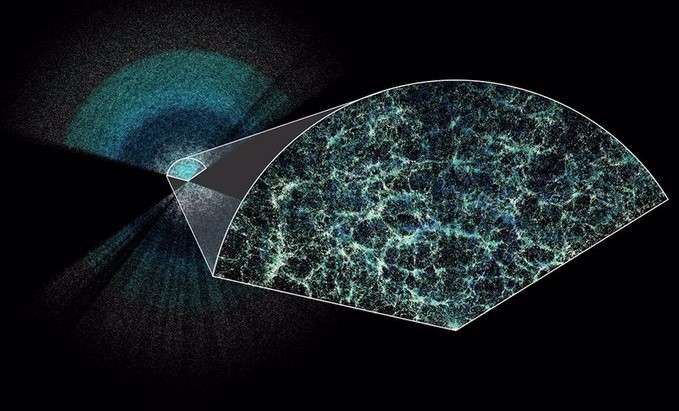WASHINGTON, April 4 (EUROPA PRESS) – The first year of operation of the Dark Energy Spectroscopic Instrument (DESI) suggests there is much more to learn about the underlying cause or causes of cosmic acceleration.
Located at Kitt Peak Observatory in Arizona, DESI collects light from the most distant regions of the universe, allowing scientists to map the universe from its infancy and trace its evolution to what we see today. Understanding how the universe began and how it will end is one of the greatest mysteries of physics: what is behind the observation that the expansion of the universe is accelerating?
An analysis of DESI's first year of data collection at the American Physical Society meeting in Sacramento confirmed the basics of what scientists consider the best model of the universe, “but suggests there is still more to learn.” Causes of cosmic acceleration.
Cosmic acceleration is complicated because it opposes gravity, which causes objects with mass to move closer together, which is what we observe at work in our solar system and nearby space. “Gravity binds things together, so when we throw a ball in the air, Earth's gravity pulls it toward the planet,” explains Ishaq-Bushaki, a physics professor at the University of Texas at Dallas and a member of the DESI collaboration.
“But on a larger scale, the universe behaves differently. It's as if there's some kind of repulsion that pulls the universe apart and accelerates its expansion. It's a big mystery, and we're investigating it from many angles. “Is it an unknown dark energy in the universe or a variation of Albert Einstein's theory of gravity on cosmological scales? ” he says in a statement.
Many scientists believe that dark energy plays an important role in cosmic acceleration, but it is not well understood. Some consider it a cosmological constant, an intrinsic property of space that drives acceleration.
To study the effects of dark energy over the past 11 billion years, the DESI team has created the largest 3D map of the universe ever created using the most precise measurements to date. This is the first time scientists have measured the expansion history of the young universe with an accuracy of better than 1%.
The leading model of the universe is called Lambda-CDM. It consists of both ordinary matter and cold dark matter (CDM) and a rarely interacting type of matter known as dark energy called lambda. Dark matter and dark energy both shape the expansion of the universe, but in opposite ways.
Through gravity, matter and dark matter slow down the expansion, while dark energy accelerates it. The size of each affects how the universe evolves. The model will be useful in validating the results of previous experiments and describing how the universe will evolve over time, says Ishaq-Bushaki.
However, when DESI's first-year results are combined with data from other studies, there are some subtle differences from what the Lambda-CDM model predicts.
“Our results show some interesting deviations from the standard model of the universe, indicating that dark energy is evolving over time,” says Ishaq-Boushakhi.
“The more data we collect, the better equipped we will be to determine whether this discovery is correct. With more data, we can identify different explanations for the result we observed or confirmed.” provides,” he says.
The additional data will also improve other early DESI results that affect the Hubble constant (a measure of how fast the universe is expanding today) and the mass of particles called neutrinos.
DESI is the first spectroscopic experiment to perform a completely blind analysis, hiding the actual result from the scientists to avoid any transcendental confirmation bias. Researchers work “blindly” with the modified data and write computer code to analyze their findings. Once everything is finalized, they apply analysis to the original data to reveal the true answer.
“Ishak-Boushaki's research and his collaboration with scientists from 70 institutions reveal important insights about our universe, and the results are fascinating,” said Dr. Francis S. and Maurine G. Johnson Distinguished Professor at the University of Texas. David Hyndman said. In Dallas.
“It's inspiring to have world-class research programs at the University of Texas at Dallas and to see our scientists play an important role in fundamental discoveries,” he concludes.

